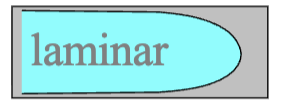chem terms unit 2
1/40
There's no tags or description
Looks like no tags are added yet.
Name | Mastery | Learn | Test | Matching | Spaced |
|---|
No study sessions yet.
41 Terms
Extraction
transfer of a solute from one phase to another
Adsorption
separation based on solute adsorption on surface of stationary phase
Partition
separation based on solute dissolving into stationary liquid
Ion-exchange
separation based on charge
Size exclusion or Gel Permeation
separation based on molecular size
Affinity
separation based on antibody-anitgen or enzyme-substrate interactions
Sensitivity
smallest concentration change that can result in a signal change
limit of detection
smallest amount of solute that generates a signal
Theoretical Plates
a number indicating how good a column is for a separation
Plate Height
Height Equivalent of a Theoretical Plate. Constant of proportionality between the bad variance and the distance it has traveled
Longitudinal Diffusion
Solute concentration is lower at the edges of a band; solute diffucses to the edges
Thickness of SP goes up, so does retention times. Why?
Solute spends more time interacting/dissolved in the SP b/c there is more of it. Partition coefficient favors SP (its greater)
Thicker SP does what to sample capacity
increases sample capacity
Thicker SP does what to early eluting peaks
improves resolution
Thicker SP does what to later eluting peaks
decreases resolution → broader peaks
Pros of OTC
higher resolution, shorter analysis time, greater sensitivity, no A term
Pros Packed column
better sample capacity
Thermal Conductivity → how it works
ability of a substance to transport heat away from hot region
Thermal Conductivity → features
GC, universal, not very sensitive, non destructive
Flame Ionization Detector → how it works
organic solutes burned in flame producing CH radicals
Flame ionization detector → features
GC, organics, destructive, little better linear range
Electron Capture → features
halogens, nitriles, nitrates, conjugated double bonds, non destructive, most sensitive
Temperature programming cons
solubility variations, volatility changes, solute stability problems, flow rate changes, SP stability
Bulk Property
measures overall change in the mobile phase
Solute Property
measures a solute specific property
UV-VIS SPECTROSCOPY
solute property, universial <210
REFRACTIVE INDEX DETECTOR
bulk property, useless in gradient elution, universal
ELECTROCHEMICAL DETECTOR
bulk or solute property, very selective, no gradient
Common polar SP → NPLC
amino, cyano, diol
Common NP SP → RPLC
octadecyl, octyl, phenyl
Standard solutions
calibration curve to determine instrument or detector’s sensitivity
Standard addition
known quant of analyte added to unknown; from signal increase deduce how much analyte was in original unknown
Internal Standard
known amt of compound different from analyte added to unknown; compare signals to determine how much unknown is present
Capillary Electrophoresis
very fast, high efficiencies, especially useful for biopolymers
Electrophoresis
Separation is based on differences in migration of charged ions in an electric field in solution
Rate of Migration depends on
size of solute → larger size = more friction
charge of solute → greater charge, increased force

electroosmotic flow profile

hydrodynamic flow profile
Why is electroosmotic profile better
Surface charge “removes” friction between
solvent and walls of capillary
Pros of CE
no particles so no A term, no SP so no RMT (no C term)
Cons of CE
can increasing velocity by increasing voltage, but this generates heat which increases B